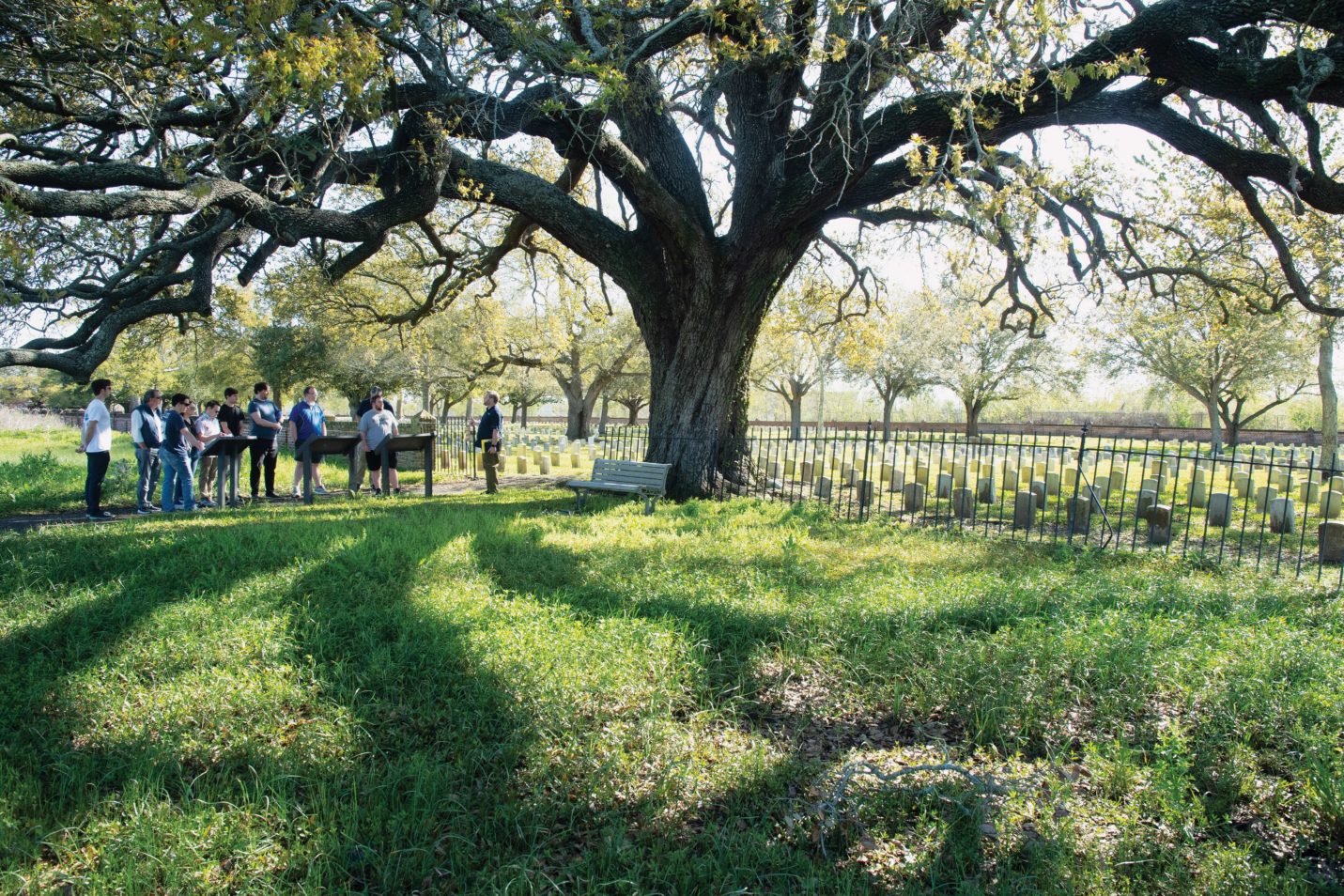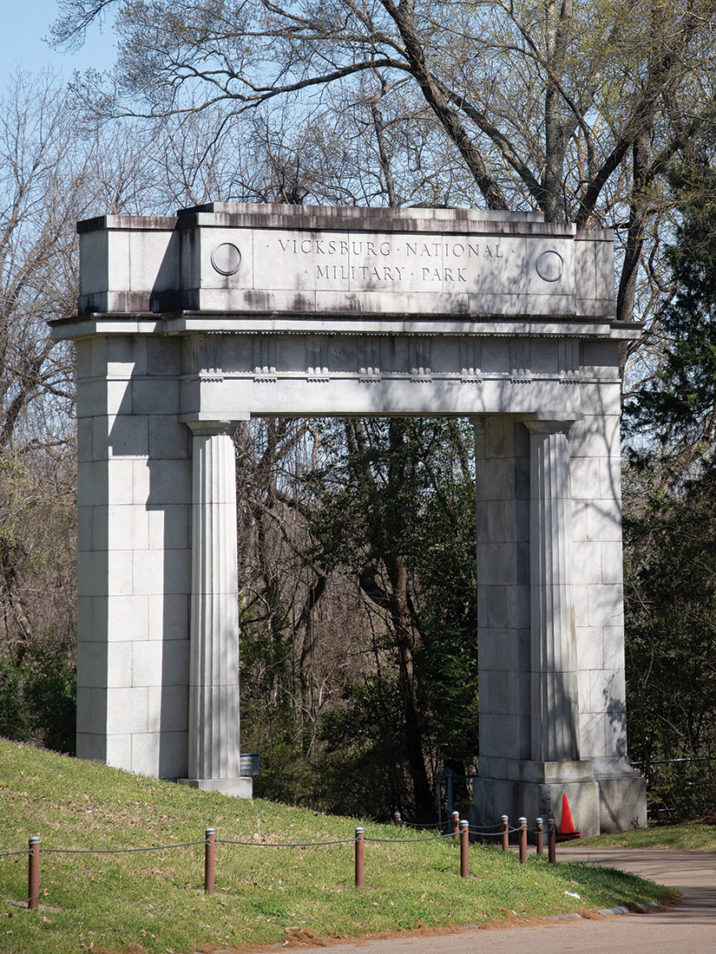By Jared Dockery | Photography by Jeff Montgomery |


Experiencing the strategic importance of the Mississippi River firsthand made history come alive for a group of students, alumni and faculty who toured Vicksburg, Mississippi, and New Orleans March 25-27. This field trip is a component of the U.S. military history course offered by the history and political science department.
During the Civil War, Confederate forces fortified the bluffs at Vicksburg and placed cannons overlooking and commanding the river below. The task of neutralizing this menacing stronghold fell to the Union general, U.S. Grant, in 1863.
Grant ordered his men to attack the Confederates entrenched in their high places on May 19 and 22, but these attacks were repulsed. Even a century and a half later, visiting the battlefield allowed us to gain an appreciation for the daunting challenges the steep terrain presented to the Union troops as they tried to fight their way uphill. Sensing the futility of these attacks, Grant shifted tactics and settled down to a siege which forced the Southern troops to surrender on July 4, 1863.
The most prized artifact at Vicksburg is the remains of the USS Cairo, a Union ironclad gunboat sunk by a Confederate “torpedo” near Haines Bluff, Mississippi, on Dec. 12, 1862. She remained buried in the Mississippi for a century before being raised in 1964. Now displayed in an open-air pavilion, the Cairo provides a fascinating glimpse of the mid-nineteenth-century transition from the old wooden-hulled navy of John Paul Jones and Stephen Decatur, to the steel-hulled, steam-driven warships that were traversing the oceans by century’s end.
Historically, the city of New Orleans, located at the mouth of the Mississippi, was even more strategically important than Vicksburg. During the closing days of the War of 1812 — after the peace treaty had been signed, but before this was known in New Orleans — the British army tried unsuccessfully to seize the city. Their hopes came to naught at the Battle of New Orleans, fought at the Chalmette plantation on Jan. 8, 1815.

We toured the battlefield on a pleasant Saturday morning. In sharp contrast to the rolling hills and sprawling expanse of Vicksburg, the Chalmette battlefield is a small, flat rectangle, bounded to the north by a cypress swamp and to the south by the Mississippi River itself. American Gen. Andrew Jackson — commanding a motley force that included free men of color, Choctaw Indians and pirates — positioned his men behind field fortifications stretching from the river to the interior of the swamp. The British obligingly attacked across open ground, suffering 2,034 total casualties, according to the American Battlefield Trust. By contrast, the victorious Americans suffered just 62 casualties.
After Chalmette, we made our way to the massive National World War II Museum. Within the museum’s five large buildings, several aircraft are dramatically suspended overhead, including a C-47 transport plane, a B-17 heavy bomber and an F4U Corsair with its distinctive bent wings. Another eye-catching artifact is the “Higgins boat” landing craft in the main lobby. We wrapped up our visit by watching the 4-D film “Beyond All Boundaries.”
Our group ate supper that evening at the Original Pierre Maspero’s restaurant, one of two New Orleans establishments that claim to be the site where Andrew Jackson met with Jean Lafitte to plan the Battle of New Orleans. On Sunday we headed home, stopping to worship at the McComb (Mississippi) Church of Christ and then enjoying a family-style meal at the Dinner Bell restaurant in McComb.
The trip was partly funded by student fees but also was generously subsidized by the Clifton L. Ganus Jr. Endowment for History and Political Science, fitting since Ganus lived in New Orleans before attending Harding. Another military history field trip is scheduled for spring 2023; alumni and colleagues interested in joining are invited to contact the department at history@harding.edu.